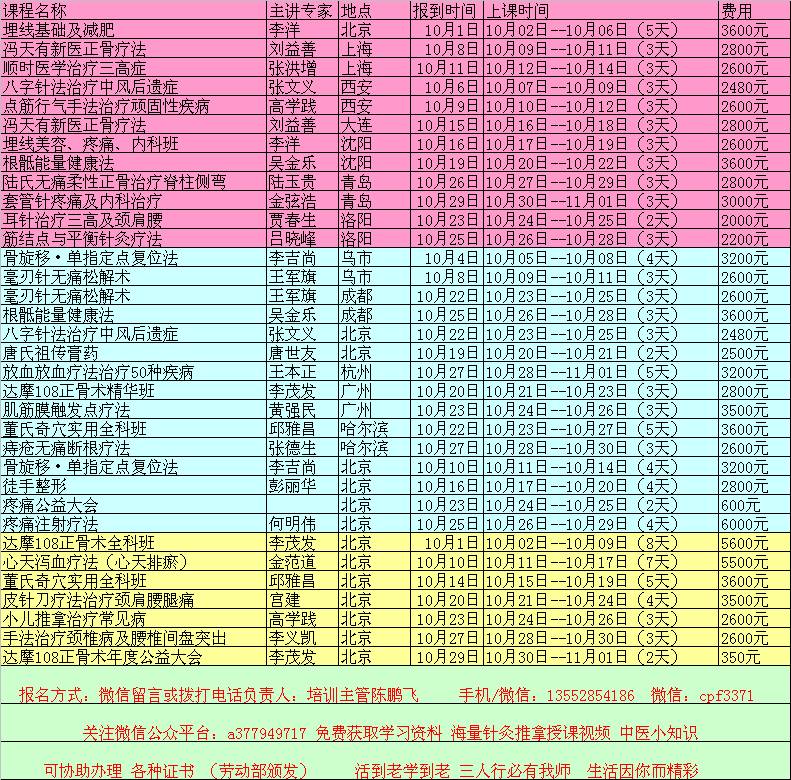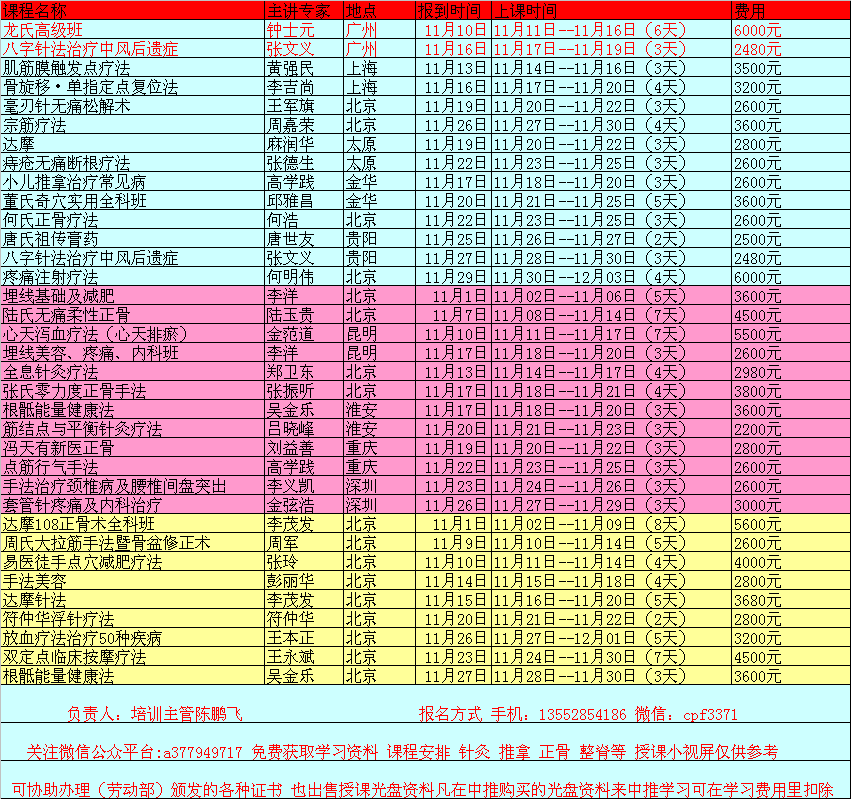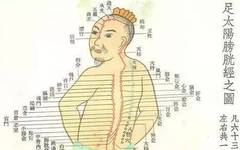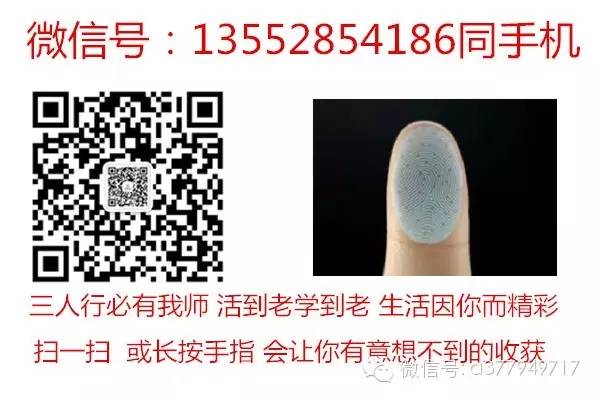
1. Channels (Jing Bie)
(1) Definition of Channels
The term “Channels” refers to the twelve branches of the main channels, distributed in the chest, abdomen, and head, forming another system of meridians that connects the exterior and interior channels and strengthens the relationship with the organs. It is included within the scope of the twelve meridians, hence referred to as the “branching main channels”.
(2) Pathway of Channels
The pathways of the twelve channels begin from the limbs, penetrating into the internal organs, and then ascend to the superficial areas of the head and neck, connecting the exterior and interior. The locations of “departure, convergence, emergence, and entry” are closely related to the pathways of the twelve channels, but there are significant differences in the direction of flow. For example, the pathway of the Hand Three Yin channels flows from the chest to the hand, while the channel branches penetrate from the armpit into the chest cavity and then ascend to the head, converging with the Hand Three Yang channels; the pathway of the Hand Three Yang channels flows from the hand to the head, while the Hand Three Yang branch penetrates from the armpit into the internal organs and then ascends to the head; the pathway of the Foot Three Yin channels flows from the foot to the chest (abdomen), while the Foot Three Yin branch flows from the foot to the head; the pathway of the Foot Three Yang channels flows from the head to the foot, while the Foot Three Yang branch flows from the foot to the head.
The main difference between the twelve channels and the main channels lies in their pathways, which exhibit the characteristics of “departure, convergence, emergence, and entry”. Each channel branch departs from its corresponding main channel, referred to as “departure” (Bie), enters the chest and abdomen referred to as “entry” (Ru), emerges at the head and neck referred to as “emergence” (Chu), and connects with the exterior and interior channels referred to as “convergence” (He). The Hand and Foot Three Yin and Yang channels together form six pairs, known as “Six Harmonies”.
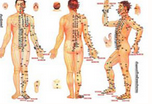
1. Foot Taiyang – Foot Shaoyin (One Convergence)
(1) Foot Taiyang Channel Branch
Entry: At the Yanjong, one branch travels to five inches below the buttocks, entering the anus.
Pathway: Belongs to the Bladder, disperses to the Kidney, and connects to the heart, linking to the root of the tongue.
Emergence: Emerges from the back at the nape.
Convergence: Converges with the Foot Taiyang.
(2) Foot Shaoyin Channel Branch
Entry: At the Yanjong.
Pathway: One branch connects with the Foot Taiyang and ascends to the Kidney, linking at the fourteenth vertebra, connecting with the Dai Mai; the direct pathway ascends from the Kidney to the root of the tongue.
Emergence: Again emerges at the nape.
Convergence: Converges with the Foot Taiyang.
2. Foot Shaoyang – Foot Jueyin (Two Convergences)
(1) Foot Shaoyang Channel Branch
Entry: Ascends around the hip, at the hairline, converging with the Foot Jueyin channel, entering between the ribs.
Pathway: Circulates in the chest, belongs to the Gallbladder, disperses to the Liver, ascends to the heart, and travels up to the throat.
Emergence: Emerges at the jaw, disperses to the face, connects to the eyes, and converges at the outer corner of the eye.
Convergence: Converges with the Foot Shaoyang channel.
(2) Foot Jueyin Channel Branch
Entry: Branches from the back of the foot, ascending to the hairline.
Pathway: Ascends and connects with the Foot Shaoyang channel.
Convergence: Converges with the Foot Shaoyang channel.
3. Foot Yangming – Foot Taiyin (Three Convergences)
(1) Foot Yangming Channel Branch
Entry: Ascends to the hip, penetrating into the abdomen.
Pathway: Belongs to the Stomach, disperses to the Spleen, ascends to the heart, and travels up to the throat.
Emergence: Emerges at the mouth, ascends to the upper part of the nose and below the eye socket, also connecting to the eyes.
Convergence: Converges with the Foot Yangming channel.
(2) Foot Taiyin Channel Branch
Entry: Branches up to the hip.
Pathway: Ascends and connects with the Foot Yangming channel, linking to the throat and penetrating to the root of the tongue.
Convergence: Converges with the Foot Yangming channel.
4. Hand Taiyang – Hand Shaoyin (Four Convergences)
(1) Hand Taiyang Channel Branch
Entry: Branches from the shoulder, entering the armpit.
Pathway: Travels to the heart, connecting to the Small Intestine.
Convergence: Converges with the Hand Taiyang channel.
(2) Hand Shaoyin Channel Branch
Entry: Between the two tendons in the armpit.
Pathway: Belongs to the heart, ascends to the throat.
Emergence: Emerges at the face, converging at the inner canthus of the eye.
Convergence: Converges with the Hand Taiyang channel.
5. Hand Shaoyang – Hand Jueyin (Five Convergences)
(1) Hand Shaoyang Channel Branch
Entry: Branches from the top of the head, entering the chest.
Pathway: Descends to the Sanjiao, disperses in the chest.
Convergence: Converges with the Hand Shaoyang channel.
(2) Hand Jueyin Channel Branch
Entry: Branches from three inches below the armpit.
Pathway: Enters the chest, connecting to the Sanjiao.
Emergence: Travels along the throat, emerges behind the ear, and descends below the occiput.
Convergence: Converges with the Hand Shaoyang channel.
6. Hand Yangming – Hand Taiyin (Six Harmonies)
(1) Hand Yangming Channel Branch
Entry: Ascends from the hand, travels between the chest and breast, branches at the shoulder joint, entering the Tianzhu bone.
Pathway: Descends into the Large Intestine, ascends to connect with the Lung, and travels up along the throat.
Emergence: Emerges from the Tianzhu.
Convergence: Converges with the Hand Yangming channel.
(2) Hand Taiyin Channel Branch
Entry: Branches from the armpit, preceding the Hand Shaoyin channel.
Pathway: Enters the Lung, disperses to the Large Intestine.
Emergence: Emerges from the Tianzhu, travels along the throat.
Convergence: Converges with the Hand Yangming channel.
(3) Physiological Functions of Channels
The six Yang channels among the twelve channels all pass through their corresponding interior organs, such as “the branch of Foot Shaoyang disperses to the Liver,” “the branch of Foot Yangming disperses to the Spleen,” and “the branch of Foot Taiyang disperses to the Kidney.” The six Yin channel branches also pass through their respective organs. This not only indicates that the twelve channel branches are connected to the organs, playing a nourishing role within the body, but also highlights the mutual relationship between the Yin and Yang channels. Their distribution and interrelationship are more intricate than the communication of the limbs through the collaterals.
The twelve channel branches assist the twelve channels in connecting the internal organs and the body surface, reflecting the “departure, convergence, emergence, and entry” relationship of the Hand and Foot Three Yin and Yang channels, and together with the twelve main channels, fifteen collaterals, and eight extraordinary vessels, they form a system for the circulation of Qi and blood. Since each channel has its own branch, the therapeutic range of a specific acupoint is not limited to the pathway of the channel, which specifically illustrates the function of the channel branches.
The twelve channel branches are not recorded in the “Neijing” for any diseases. However, the channel branches significantly influence the therapeutic properties of certain acupoints. The symptoms that each channel acupoint can treat may not be reached by the channel itself, but rather by the channel branches. For instance, the acupoints Chengshan, Chengjin, and Heyang of the Foot Taiyang Bladder channel can treat hemorrhoids, but the pathway of the Bladder channel does not reach the anus, while the pathway of the channel branch is “five inches below the buttocks, entering the anus.”
2. Collaterals (Luo Mai)
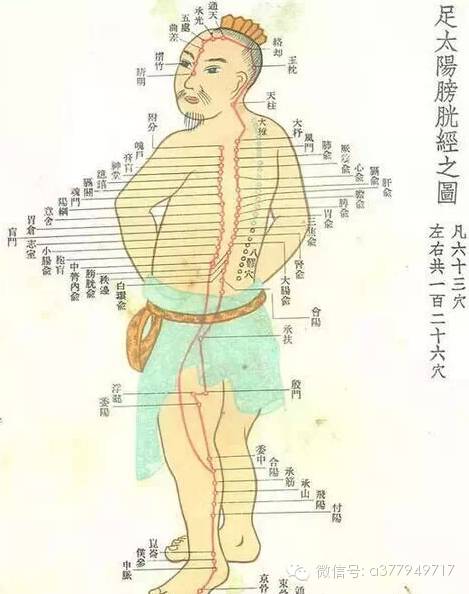
(1) Definition of Collaterals
Collaterals are branches that emerge from the main channels, also known as “Bie Luo,” primarily consisting of fifteen collaterals. The fifteen collaterals are composed of the branches of the twelve channels and the Ren and Du vessels, as well as the major collateral of the Spleen.
Finer branches that emerge from the collaterals are called “Sun Luo.” The collaterals distributed on the surface of the skin are referred to as “Floating Collaterals.” The collaterals can interconnect with each other, “converging in the skin, their meeting points visible externally” (from “Lingshu: Channels”). The collaterals branch from large to small, forming countless fine branches that spread throughout the body, allowing Qi and blood to permeate all parts and tissues of the body, thus transforming the linear flow of Qi and blood in the meridians into a diffuse surface distribution, nourishing the whole body.
Once a collateral branches from a specific acupoint of a channel, it is named after the acupoint from which it branches. For example, the collateral of the Hand Taiyin channel branches from the Lieque acupoint, hence this collateral is named “Lieque.”
(2) Pathway of Collaterals
Among the fifteen collaterals, the collaterals of the twelve channels emerge from the limbs below the elbows and knees, connecting between the Yin and Yang channels, serving as a link for the twelve channels to communicate with each other in the limbs.
The collaterals of the Ren vessel are distributed in the abdomen, connecting with the Chong vessel; the collaterals of the Du vessel are distributed in the back, apart from connecting with the Taiyang, they can also link the Ren vessel and the Foot Shaoyin channel; the major collateral of the Spleen is distributed in the lateral body, able to connect all Yin and Yang collaterals. These three play a connecting role in the trunk, thus enhancing the unified connection of the front, back, and sides of the body.
1. Hand Taiyin Collateral
Collateral Name: Lieque.
Location: One and a half inches behind the wrist.
Adjacent Channel: Connects with the Hand Yangming channel.
Pathway: Branches from the Lieque acupoint, starts above the wrist joint, connects directly to the Hand Taiyin channel in the palm, dispersing at the ball of the thumb.
2. Hand Shaoyin Collateral
Collateral Name: Tongli.
Location: One inch behind the wrist.
Adjacent Channel: Connects with the Hand Taiyang channel.
Pathway: Branches from the Tongli acupoint, ascends along the channel to the heart, connects to the root of the tongue, belonging to the eye system.
3. Hand Jueyin Collateral
Collateral Name: Neiguan.
Location: Two inches behind the wrist.
Adjacent Channel: Connects with the Hand Shaoyang channel.
Pathway: Branches from the Neiguan acupoint, emerges between the two tendons, ascends along the channel to connect with the Pericardium, linking to the heart system.
4. Hand Yangming Collateral
Collateral Name: Pianli.
Location: Three inches behind the wrist.
Adjacent Channel: Connects with the Hand Taiyin channel.
Pathway: Branches from the Pianli acupoint, connects with the Hand Taiyin, its branch ascends along the arm to the shoulder, connects to the teeth, and branches into the ear, converging with the main channel.
5. Hand Taiyang Collateral
Collateral Name: Zhizheng.
Location: Five inches behind the wrist.
Adjacent Channel: Connects with the Hand Shaoyin channel.
Pathway: Branches from the Zhizheng acupoint, ascends to the elbow, connecting to the shoulder.
6. Hand Shaoyang Collateral
Collateral Name: Waiguan.
Location: Two inches behind the wrist.
Adjacent Channel: Connects with the Heart Master (Jueyin).
Pathway: Branches from the Waiguan acupoint, travels along the outer side of the arm, entering the chest, converging with the Jueyin channel.
7. Foot Yangming Collateral
Collateral Name: Fenglong.
Location: Eight inches above the outer ankle.
Adjacent Channel: Connects with the Foot Taiyin channel.
Pathway: Branches from the Fenglong acupoint, travels towards the Taiyin, its branch along the outer side of the tibia, connecting to the top of the head, and dispersing to the throat and pharynx.
8. Foot Taiyang Collateral
Collateral Name: Feiyang.
Location: Seven inches above the outer ankle.
Adjacent Channel: Connects with the Foot Shaoyin channel.
Pathway: Branches from the Feiyang acupoint, travels towards the Foot Shaoyin channel.
9. Foot Shaoyang Collateral
Collateral Name: Guangming.
Location: Five inches above the outer ankle.
Adjacent Channel: Connects with the Foot Jueyin channel.
Pathway: Branches from the Guangming acupoint, travels towards the Foot Jueyin, connecting to the dorsum of the foot.
10. Foot Taiyin Collateral
Collateral Name: Gongsun.
Location: One inch behind the first metatarsophalangeal joint.
Adjacent Channel: Connects with the Foot Yangming channel.
Pathway: Branches from the Gongsun acupoint, travels towards the Foot Yangming channel, its branch enters the abdominal cavity, connecting to the intestines and stomach.
11. Foot Shaoyin Collateral
Collateral Name: Dazhong.
Location: Below the inner ankle.
Adjacent Channel: Connects with the Foot Taiyang channel.
Pathway: Branches from the Dazhong acupoint, travels towards the Foot Taiyang channel. Its branch ascends along the channel, reaching below the Pericardium, and connects to the lumbar spine.
12. Foot Jueyin Collateral
Collateral Name: Ligou.
Location: Five inches above the inner ankle.
Adjacent Channel: Connects with the Foot Shaoyang channel.
Pathway: Branches from the Ligou acupoint, travels towards the Foot Shaoyang channel. Its branch passes through the tibia, ascending to the testicles, converging at the Yin area.
13. Ren Vessel Collateral
Collateral Name: Jiutai.
Location: Below the xiphoid process of the sternum.
Adjacent Channel: Connects with the Du vessel.
Pathway: Branches from the Jiutai acupoint, descending from the xiphoid process, dispersing in the abdomen.
14. Du Vessel Collateral
Collateral Name: Changqiang.
Location: Half an inch below the tip of the coccyx.
Adjacent Channel: Connects with the Foot Taiyang channel.
Pathway: Branches from the Changqiang acupoint, flanking the spine, ascending to the nape, dispersing on the head. The descending collateral starts from the shoulder blade, diverging to the left and right, connecting to the Foot Taiyang channel, entering the muscles beside the spine.
15. Major Spleen Collateral
Collateral Name: Dabao.
Location: Three inches below the armpit.
Adjacent Channel: Connects with the blood of the whole body.
Pathway: Branches from the Dabao acupoint, three inches below the armpit, dispersing in the chest and ribs.
(3) Physiological Functions of Collaterals
They serve as a link between the Yin and Yang channels, participating in the overall circulation of the twelve channels. The pathological characteristics of the fifteen collaterals reflect conditions primarily affecting the surface of the limbs, often localized diseases, unlike the more complex and profound conditions of the twelve channels.
3. Sinews (Jing Jin)
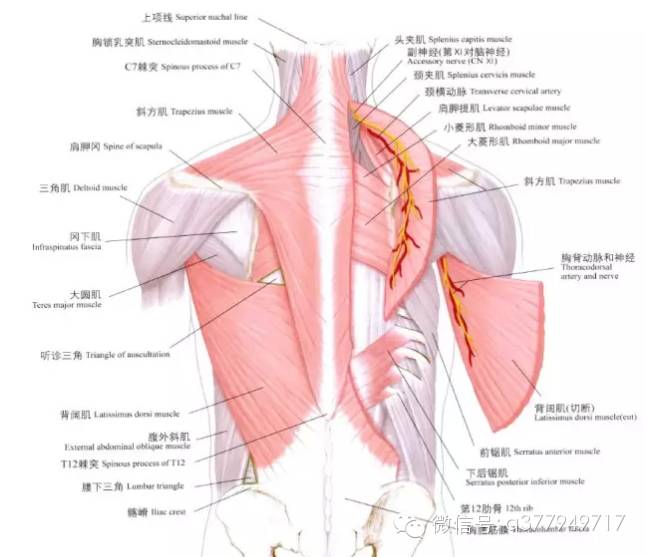
(1) Definition of Sinews
Sinews refer to the twelve sinews, which are nourished by the Qi of the twelve channels, forming a system that nourishes the muscles and joints. They are a fascial system associated with the twelve channels, providing an alternative pathway for the Qi of the channels to circulate between the limbs, bones, and muscles. Since they run along the surface of the body, they are referred to as sinews. Sinews are also divided into Hand and Foot Three Yin and Yang, with the same number as the channels, and their pathways often connect with the channels.
(2) Pathway of Sinews
The orientation and distribution of the twelve sinews generally align with the pathways of the twelve channels. However, while the twelve channels may have different directions, the sinews all originate between the fingers and toes, converge at the ankles, wrists, knees, hips, elbows, armpits, and neck, and terminate at the head and face, running along the surface of the body without entering the internal organs, connecting with other channels.
1. Hand Taiyin Sinew
The Hand Taiyin sinew starts at the top of the thumb, ascends along the thumb, converging at the ball of the thumb, travels along the forearm, converging at the elbow, ascends along the inner side of the upper arm, enters the armpit, emerges at the Tianzhu area, converging at the front of the shoulder, and above it converges at the Tianzhu, dispersing in the chest, connecting with the Hand Jueyin sinew below the diaphragm, converging at the ribs.
2. Hand Yangming Sinew
The Hand Yangming sinew starts at the radial side of the second finger, converging at the back of the wrist, ascends along the forearm, converging at the outer side of the elbow, travels along the outer side of the upper arm, converging at the shoulder joint. Branches from the sinew encircle the shoulder blade, while the direct sinew travels from the shoulder joint to the neck, with branches reaching the cheek, converging at the area beside the nose, and the direct sinew converging at the head, descending to the right side of the jaw.
3. Foot Yangming Sinew
The Foot Yangming sinew starts at the second toe, middle toe, and ring toe, converging at the dorsum of the foot, slanting outward, attaching to the fibula, converging at the outer side of the tibia, ascending to the hip joint, and then along the side of the abdomen, belonging to the spine. The direct sinew ascends along the tibia, converging at the knee, while the branch converges at the outer side of the fibula, connecting with the Foot Shaoyang sinew, and the direct sinew ascends along the quadriceps, converging at the genital area, then ascending to the abdomen, converging at the Tianzhu area, and then ascending to the neck, flanking the mouth, converging at the area beside the nose, and then converging with the Foot Taiyang sinew. The Taiyang sinew disperses around the eyes, forming the upper eye system, while the Yangming sinew disperses below the eyes, forming the lower eye system. Another branch converges from the cheek to the area in front of the ear.
4. Foot Taiyin Sinew
The Foot Taiyin sinew starts at the inner side of the big toe, ascending to the inner ankle, directly ascending to the inner side of the knee, along the inner side of the thigh, converging at the genital area, ascending to the abdomen, converging at the navel, along the abdomen, converging at the ribs, dispersing in the chest, with the internal sinews attaching to the side of the spine.
5. Hand Shaoyin Sinew
The Hand Shaoyin sinew starts at the inner side of the little finger, converging at the back of the wrist, ascending to the inner side of the elbow, entering the armpit, connecting with the Hand Taiyin sinew, running along the inner side of the breast, converging at the chest, descending along the diaphragm, connecting to the navel.
6. Hand Taiyang Sinew
The Hand Taiyang sinew starts at the top of the little finger, converging at the back of the wrist, ascending along the inner side of the forearm, converging at the inner upper arm, entering the armpit. Its branches travel along the back of the elbow, ascending around the shoulder blade, along the neck, emerging in front of the Hand Taiyang sinew, converging at the area behind the ear, with branches entering the ear, and the direct sinew emerging from above the ear, descending to the jaw, while the upper part connects to the outer corner of the eye.
7. Foot Taiyang Sinew
The Foot Taiyang sinew starts at the little toe, ascending to the ankle, slanting upward to the knee, while the lower part runs along the outer side of the foot, converging at the heel, ascending along the Achilles tendon to the calf. Its branches converge at the calf (outer side), ascending to the inner side of the abdomen, running alongside the spine, ascending to the nape, with branches converging at the root of the tongue, while the direct sinew converges at the occiput, descending to the face, converging at the nose, with branches forming the upper eye system, while the lower part converges at the area beside the nose. The back branches run from the outer side of the armpit, converging at the shoulder joint, with one branch entering the armpit, ascending from the Tianzhu area, converging at the area behind the ear, and another branch emerging from the Tianzhu area, slanting upward to the area beside the nose.
8. Foot Shaoyin Sinew
The Foot Shaoyin sinew starts at the bottom of the little toe, running along the sole of the foot, slanting beneath the inner ankle, converging at the heel, connecting with the Foot Taiyang sinew, ascending along the inner side of the tibia, converging at the genital area, running alongside the spine, ascending to the nape, converging at the occiput, connecting with the Foot Taiyang sinew.
9. Hand Jueyin Sinew
The Hand Jueyin sinew starts at the middle finger, running alongside the Hand Taiyin sinew, converging at the inner side of the elbow, ascending along the inner side of the upper arm, converging at the armpit. Its branches enter the armpit, dispersing in the chest, converging at the diaphragm.
10. Hand Shaoyang Sinew
The Hand Shaoyang sinew starts at the tip of the fourth finger, converging at the back of the wrist, running along the outer side of the arm, converging at the elbow, ascending along the outer side of the upper arm, converging at the neck, connecting with the Hand Taiyang sinew. Its branches enter at the angle of the jaw, connecting to the root of the tongue, while one branch runs along the jaw, connecting to the area in front of the ear, ascending to the temporal region, converging at the corner of the forehead.
11. Foot Shaoyang Sinew
The Foot Shaoyang sinew starts at the fourth toe, converging at the outer ankle, ascending along the outer side of the tibia, converging at the outer side of the knee. Its branches emerge from the fibula, ascending along the outer side of the thigh, converging at the quadriceps, while the back branches converge at the sacral area. The direct sinew runs along the lateral abdomen, ascending along the front of the armpit, connecting to the chest and breast, converging at the Tianzhu area, while the direct sinew emerges from the armpit, passing through the Tianzhu area, running towards the front of the Foot Taiyang sinew, ascending around the forehead, converging at the top of the head, descending towards the jaw, converging at the area beside the nose, with branches converging at the outer canthus, forming the outer boundary of the eye.
12. Foot Jueyin Sinew
The Foot Jueyin sinew starts at the upper side of the big toe, converging at the front of the inner ankle, ascending along the inner side of the tibia, converging below the inner condyle of the tibia, and then ascending along the inner side of the thigh, converging at the genital area, connecting with other sinews.
4. Skin Areas (Pi Bu)
(1) Definition of Skin Areas
The skin areas refer to the twelve skin areas, which reflect the functional activities of the twelve channels on the body surface. They are the regions where the Qi of the meridians disperses, dividing the skin of the entire body into twelve areas according to the twelve channels. The channels, channel branches, collaterals, and sinews are generally divided into Hand and Foot Three Yin and Yang. The skin on the body surface is also divided according to the meridians, hence referred to as the twelve skin areas.
(2) Pathway of Skin Areas
The twelve skin areas combine into six channel skin areas, each with a specific name, as shown in the table below.
┌────┬────┬────┬─────┬────┬────┬────┐
│ Six Channel Name │ Taiyang │ Yangming │ Shaoyang │ Taiyin │ Shaoyin │ Jueyin │
├────┼────┼────┼─────┼────┼────┼────┤
│ Skin Area Name │ Guanshu │ Haifei │ Shuchu │ Guanzhe │ Shuru │ Haijian │
└────┴────┴────┴─────┴────┴────┴────┘
(3) Physiological Functions of Skin Areas
The twelve skin areas belong to the outermost layer of the body, connecting with the Qi and blood of the meridians, serving as a barrier for the body, protecting it from external pathogens and reflecting pathological changes. “The skin is the part of the meridians. If pathogens invade the skin, the pores open, allowing the pathogens to enter the collaterals; if the collaterals are full, they enter the channels; if the channels are full, they affect the organs” (from “Suwen: Discussion on the Skin Areas”). Thus, the skin, collaterals, channels, organs, and viscera form a hierarchy of disease transmission; changes in the organs and channels can be reflected in the skin areas, such as “if the color is mostly blue, it indicates pain; if mostly black, it indicates obstruction; if yellow or red, it indicates heat; if mostly white, it indicates cold.” Therefore, external examination and treatment can infer and treat internal diseases. Techniques such as skin acupuncture, collateral needling, and topical applications are all based on the theory of skin areas.
Disclaimer: This article is published solely for the purpose of conveying information. Its originality and the content stated within have not been verified by our site. We do not guarantee or promise the authenticity, completeness, or timeliness of this article or any part thereof. Readers should use it for reference only and should not rely on it directly for disease treatment!

